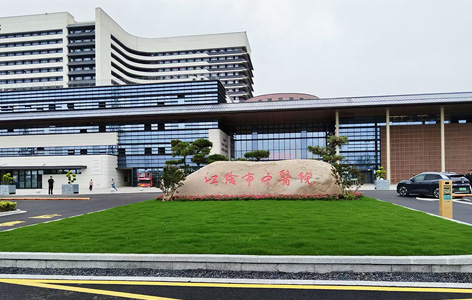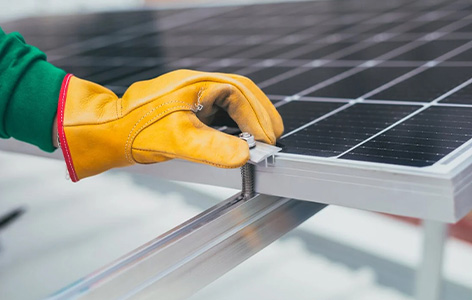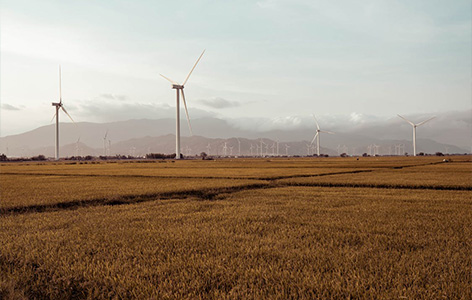Science popularization: What is wind power grid connection?
2024-12-17Wind energy, as a clean and renewable energy source, is widely used worldwide. With the development and utilization of wind power, the number of thermal power plants can be effectively reduced, thereby reducing the consumption of coal resources and promoting sustainable development in China. So, do you know what wind power grid connection is? How did it smoothly integrate into the power grid?
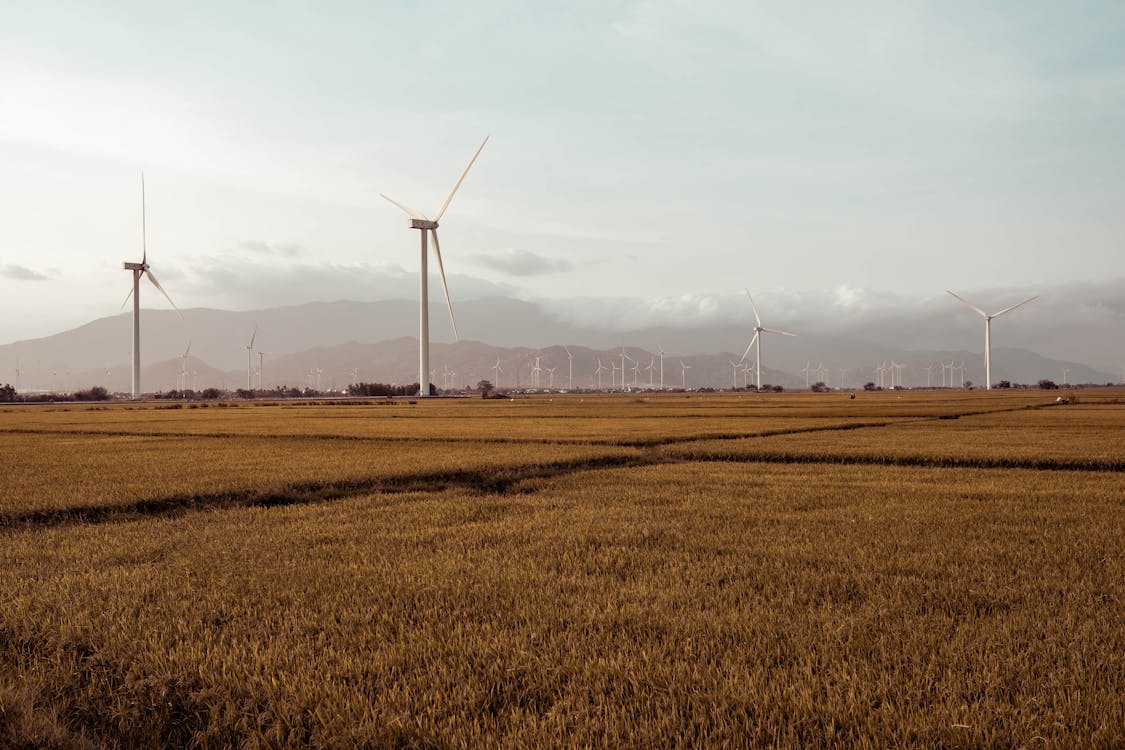
What is wind power grid connection
There are two different types of wind power generation:
Independent operation - off grid type:
Off grid wind turbines refer to wind turbines that operate independently of the power grid, producing electricity that is not directly connected to the grid but stored in energy storage devices (such as batteries) for use by loads when needed. The single unit capacity of off grid wind turbines is generally small, not exceeding 10kW.
It is mainly suitable for areas where the power grid cannot effectively cover, such as pastoral areas, forest areas, communication base stations, meteorological stations, islands, and border posts. Off grid wind turbines have the advantages of low cost, flexible application, easy maintenance, and can save national electricity consumption.
Connected to the power system for operation - grid connected type:
Wind power grid connected operation refers to connecting wind turbines to the power grid, synchronizing the electricity generated by the generators with the grid, and delivering the electricity to the grid to meet the needs of the power system. The single unit capacity of grid connected wind turbines is generally large, reaching the megawatt level.
Mainly used in large-scale wind power plants, it can receive compensation and support from the large power grid, and more fully develop the available wind resources, which is the main development direction of wind power generation at home and abroad.
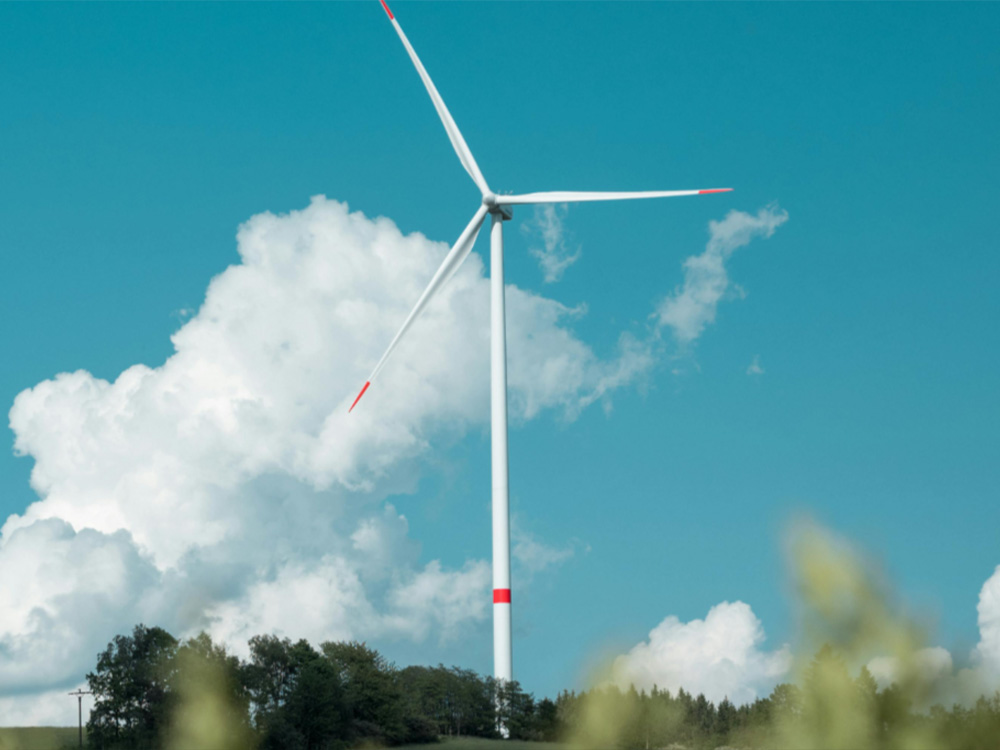
Advantages of wind power grid connection
1. Short construction period: Wind turbines and their auxiliary equipment have modular characteristics, simple design and installation, and the transportation and installation time of a single wind turbine does not exceed three months. The construction period of a 10MW wind farm does not exceed one year, and one unit can be put into operation after installation.
2. The actual land area is small and the requirements for land quality are low: the building area of equipment in the wind farm accounts for only about 1% of the wind farm, and the rest of the site can still be used for agriculture, animal husbandry, and fishing.
3. High degree of automation in operation management: capable of unmanned operation. On the other hand, wind power generation is limited by its primary energy source - wind energy.
Wind power grid connection method
The grid connection methods for wind power generation can be roughly divided into three types: asynchronous generators, synchronous generators, and doubly fed generators.
1. Asynchronous generator grid connection
① Direct grid connection of asynchronous generators: refers to the automatic integration of wind driven asynchronous generators into the power grid when their speed approaches synchronous speed. The signal for automatic grid connection is given by the cutting speed device, and then the automatic air switch is closed to complete the grid connection process. This grid connection method requires that the phase sequence of the generator be the same as that of the grid during grid connection.
Disadvantages: When directly connected to the grid, there may be significant surge currents and a decrease in grid voltage. Suitable for asynchronous generators with a capacity below one hundred kilowatts and large grid capacity.
② Asynchronous generator voltage reduction and grid connection: A smooth grid connection technology is adopted by connecting resistors or reactors in series between the asynchronous motor and the grid, or by connecting an autotransformer to reduce the amplitude of the impulse current and the voltage drop of the grid at the moment of grid connection and closing.
Disadvantage: Because resistors, reactors, and other components consume power, they must be quickly disconnected when the generator enters a stable operating state after being connected to the grid.
Suitable for units with a capacity of over 100 kilowatts, it is obvious that this grid connection method has poor economic efficiency.
③ Soft grid connection of asynchronous motors: refers to a smooth grid connection technology adopted in wind power generation systems to solve the problem of large surge currents that may be generated when large asynchronous generators are directly connected to the grid. This grid connection method involves connecting the stator of an asynchronous generator to the grid through a bidirectional thyristor in series with each phase. All three phases are controlled by thyristors, and the two ends of the bidirectional thyristors are connected in parallel with the dynamic closing contacts of the grid connected automatic switch.
Advantages: This soft grid connection method can eliminate the need for a grid connected automatic switch, making the control circuit simpler. It also avoids phenomena such as contact bounce, sticking, and wear of automatic switches with contacts, ensuring a higher switching frequency.
Shortcoming: High reverse voltage bidirectional thyristors with larger current allowable values need to be selected, because the current passing through the bidirectional thyristors needs to meet the rated current value of the asynchronous generator, while the high reverse voltage bidirectional thyristors in the soft grid connection method with bypass grid automatic switch only need to be able to pass a slightly higher current than the no-load current of the generator to meet the requirements.
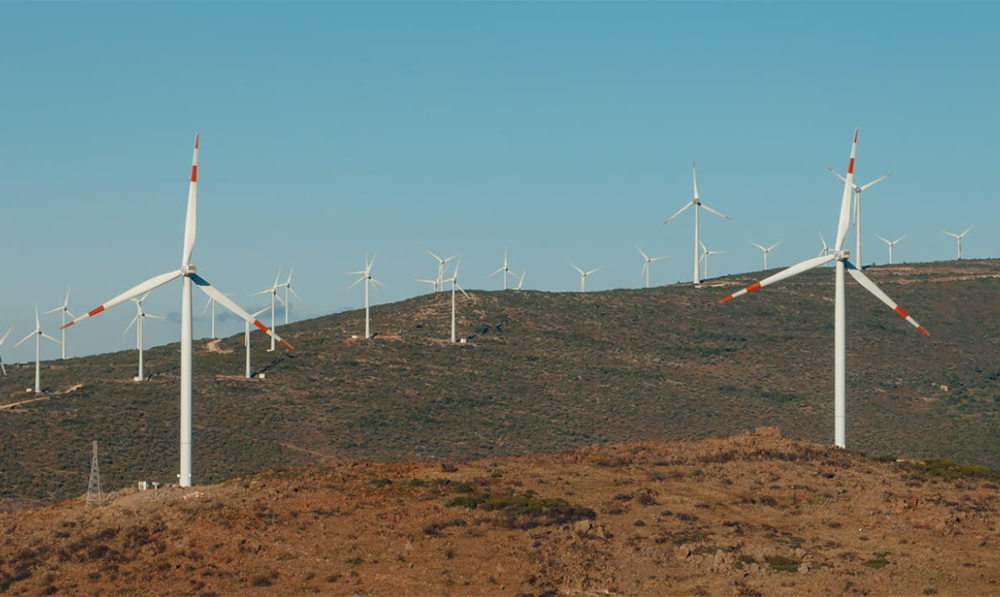
2. Synchronous generator set grid connection:
Synchronous generator grid connection is a process in which a wind turbine drives a synchronous generator in parallel with the power grid through a frequency converter device.
The grid connection of direct drive AC permanent magnet synchronous generator units is achieved by wind turbines directly driving low-speed AC generators through IGBT inverters with fast working speed, low driving power, and reduced conduction voltage.
3. Grid connection of doubly fed generator units:
The working principle of the grid connected system for doubly fed wind turbines is based on electromagnetic induction and power electronic conversion technology, allowing the generator to deliver electrical energy to the grid at a constant frequency even under variable speed operation.
The grid connected system of doubly fed generators mainly consists of a stator, a rotor, and a set of power electronic converters. During operation, the wind drives the blades of the generator to rotate, which in turn drives the rotor to rotate, and then increases the speed of the gearbox to make the rotor rotate at a higher speed. The rotor is connected to the power grid through a converter and can absorb or feed electrical energy from or to the grid as needed.
The grid connection of doubly fed wind turbines can ensure the stability of power grid operation and the quality of power supply. This device has the advantage of simple structure, and the mechanical components are less affected by external forces. It is more flexible in unit control and has high operating efficiency.
Wind power grid connection approval process
Taking offshore wind power projects as an example, grid connection is the process of connecting the power transmission and distribution network of the wind power project site with the national power grid system to achieve power transmission and exchange. The approval and integration process for grid connection usually consists of the following stages:
1. Project site selection stage: The site selection of offshore wind power projects is the starting point of the approval and integration process. During the site selection stage, it is necessary to fully consider wind energy resources, water depth, geographical environment, as well as the requirements of relevant policies and regulations. The project party needs to submit site selection plans, environmental assessment reports, and other documents for evaluation and approval.
2. Grid connection application stage: After the project site is determined, the project party needs to submit a grid connection application to the national energy regulatory authority. The grid connection application includes project overview, technical parameters, grid access plan, wind farm scale, and other contents. The application materials need to provide a detailed description of the operating mechanism of the wind farm, the method of grid connection, and feasibility analysis.
3. Grid review and evaluation stage: The national energy regulatory authority will review and evaluate the grid connection application. The review content includes the technical feasibility of the wind farm, the grid access capability, and the impact on the operation of the national power grid. The national energy regulatory authority may conduct several rounds of technical communication and negotiations with the project party to ensure the feasibility and safety of the project.
4. Negotiation stage of grid connection agreement: After the grid review and evaluation are approved, the project party and the national grid operator need to negotiate the grid connection agreement. The negotiation content includes grid access conditions, transmission line construction, electricity purchase and sale prices, etc. Both parties need to reach an agreement and sign a formal contract.
5. Construction phase: The project party starts the construction of the wind farm according to the grid connection agreement. Construction includes fan installation, cable laying, substation construction, etc. During the construction process, it is necessary to comply with relevant environmental and safety regulations, and work closely with the State Grid operator to ensure the smooth progress of the project.
6. Grid connected commissioning and acceptance stage: After the completion of the wind farm construction, grid connected commissioning and acceptance are required. The debugging process includes grid connected operation tests, power load balancing, etc. Once the debugging is passed and successfully connected to the national power grid system, the project party can officially start power generation and operation.
Wind power grid connected transmission process
1. Construction of wind power plants: Construct wind power plants in selected areas with abundant wind resources, install wind turbines and related supporting facilities. When selecting a site, it is necessary to comprehensively consider factors such as wind speed, terrain, and environmental impact to ensure the efficient operation of the wind farm.
2. Electricity production: Wind turbines capture wind energy through their blades, drive the generator to operate, and generate electricity. The generator converts mechanical energy into electrical energy, forming alternating current.
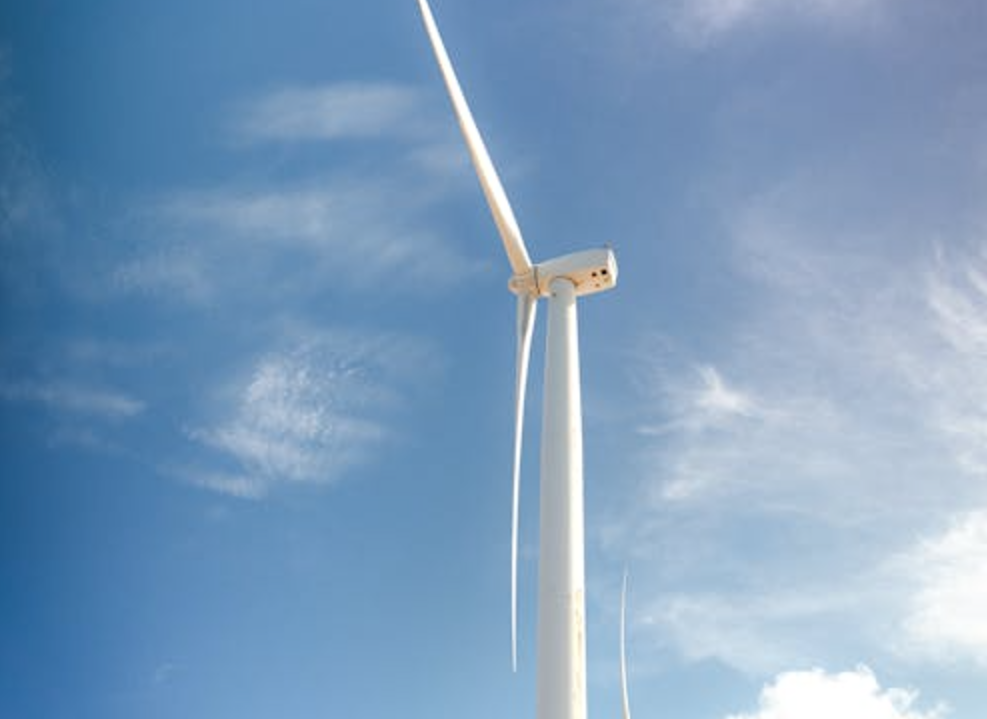
3. Boosting: Due to the low output voltage of wind power plants (usually 690V or 1100V), in order to reduce losses during transmission, it is necessary to use a boosting transformer to raise the voltage to a level suitable for long-distance transmission (such as 35kV, 110kV, or even higher).
4. Transmission: The boosted electrical energy is transmitted to the grid access point through transmission lines. Transmission lines may be overhead lines or underground cables, depending on the actual situation.
5. Grid connection point: At the grid connection point, the power of the wind farm will be connected to the main grid, and this process needs to meet the technical standards and scheduling requirements of the grid. At the grid connection point, there is usually a substation responsible for the connection and distribution of electricity.
6. Monitoring and scheduling: After grid connection, the operation status of the wind farm will be monitored in real-time by the power dispatch center to ensure the stable operation of the power system. The dispatch center uses smart grid technology to predict and regulate the power generation of wind farms, ensuring supply-demand balance.
7. Distribution: Ultimately, wind power is distributed to end users through the distribution network to meet the electricity needs of production and daily life. The distribution network is responsible for converting high voltage electricity into low voltage electricity suitable for household and business use.
Key technologies for wind power grid connection
Grid connected wind turbines need to meet the requirements for grid connection, including parameters such as voltage, frequency, and phase that are consistent with the grid. To ensure the smooth integration of wind power into the grid, a series of technical measures are required:
1. Smart grid technology: Utilizing technologies such as the Internet of Things, big data, and cloud computing to achieve intelligent management and scheduling of wind farms. Smart grid technology can monitor the operation status of the power system in real time, detect and handle abnormal situations in a timely manner, and improve the reliability of the system.
2. Energy storage technology: Through technologies such as battery energy storage systems and pumped storage power stations, the fluctuation of wind power output is smoothed out, improving the stability of the power system. The energy storage system can store excess electricity when the wind is strong and release it when the wind is weak, ensuring the continuity of power supply.
3. Prediction technology: By accurately predicting meteorological parameters such as wind speed and direction, power generation plans can be made in advance to ensure supply-demand balance. This not only helps to improve the utilization rate of wind power, but also reduces dependence on traditional fossil fuels.
4. Grid dispatch technology: The dispatch algorithm adopted by the power dispatch center reasonably arranges the power generation plan of wind power and other power sources to ensure the stable operation of the power system. The scheduling technology also needs to consider the safety and economy of the power grid.
5. Inverter technology: The AC power generated by wind turbines needs to be converted into electrical energy suitable for the grid frequency and phase through inverters. The advancement of inverter technology has made this conversion process more efficient and stable.
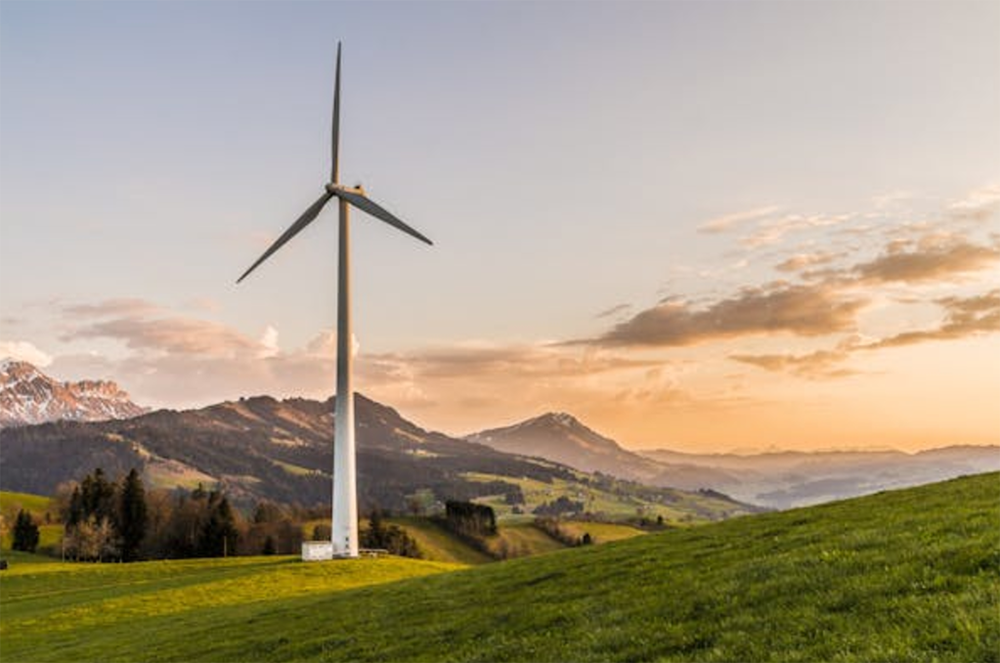
Offshore wind power grid connection technology:
The typical grid connection technology solutions for offshore wind farms mainly include high-voltage alternating current transmission (HVAC) systems, conventional direct current transmission (LCC-HVDC) systems, flexible direct current transmission (VSC-HVDC) systems, and frequency division transmission (FFTS) systems.
High voltage AC transmission system: mature technology, good economy, and wide application, but the problem of reactive power charging of high-voltage AC cables will limit the capacity and distance of line transmission, and reactive power compensation equipment needs to be configured.
Conventional DC transmission systems require the installation of filtering devices and reactive power compensation equipment, which increases the construction workload and complexity of offshore boosting platforms. However, there is currently no practical application of offshore wind power transmission.
Flexible DC transmission system: using fully controlled devices to avoid commutation failure problems, it can achieve decoupling control of active and reactive power, and improve fault ride through capability.
The impact of wind power grid connection on the power system
When wind power is connected to the grid, there are still some common problems that often have an impact on the power system, leading to the inability of the grid to operate normally.
1. Impact on the power grid system
Asynchronous motors are commonly used power generation devices, but they are not equipped with independent electromagnetic devices, so the establishment of the magnetic field can only be completed with the help of the power grid system. In the case of directly connecting wind turbines to the grid, it is likely to generate significant voltage surges, resulting in surge currents.
This surge current is directly related to the voltage of the power grid system. When the capacity and scale of the wind farm are small, the surge current will not affect the normal operation of the power grid system. However, as the scale of wind farms and the capacity of power plants continue to increase, the impact current generated during grid connection will have a significant impact on the power grid's competitive operation, mainly leading to voltage drops and affecting the safety and stability of the power grid system.
2. Affects voltage stability
For the power system, the key factor affecting the voltage stability of the grid system is reactive power. During the process of grid connection, the wind farm will establish its own magnetic field by absorbing reactive power from the grid.
At high speeds of wind turbines, the absorption of reactive power gradually increases. As the speed of the unit continues to decrease, the absorption of reactive power will also decrease. Through comprehensive analysis, it can be found that the fundamental reason for this situation is the influence of the characteristics of wind power itself. Due to its strong volatility, it will directly affect the voltage stability of the power grid.
3. The impact on power quality
For wind farms, there is significant fluctuation in their reactive power output, which directly affects the voltage stability and power quality of the grid system.
① In the case of reducing the instantaneous impact of wind farms on the power grid system, it is necessary to adopt a soft start method and strengthen the management of related equipment. However, when the thyristor fails, it is likely to cause the generation of subharmonics.
② At the moment when the wind farm is connected to the grid, if there is a continuous change in current, it will cause the operating load of the converter to continuously increase, resulting in the generation of a large number of harmonics. This will cause the reactive power absorbed by the wind farm to continue to increase, leading to a continuous decrease in the voltage of the power grid.
4. The impact on relay protection devices
The power distribution system is the main system used in China's traditional power grid, which enables the generated electricity to be transmitted to various loads through the power system, thereby ensuring one-way transmission of electricity. However, after the completion of wind power grid connection, the traditional one-way power transmission method will be changed and replaced by two-way transmission.
In order to prevent wind turbines from damaging their own equipment and affecting the stability and safety of the entire power grid after being put into operation, it is necessary to maintain the normal operation of the wind turbine motors and reduce the load on the system.
When the scale of wind farms integrated into the power grid system is large, it is necessary to re evaluate the short-circuit current of the power grid system and detect the short-circuit capacity. This can ensure that the circuit breaker can still withstand short-circuit capacity after grid connection, avoiding the problem of unresolved short-circuit currents.



